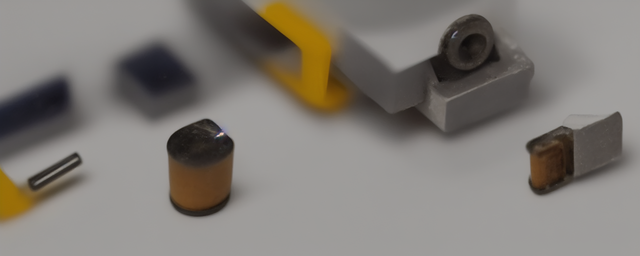
电感啸叫的危害
原|2024-04-25 18:01:54|浏览:83
The phenomenon of inductor coil whine, also known as coil whine or inductor noise, can pose several potential hazards and drawbacks in electronic devices. Inductor coil whine is typically characterized by a high-pitched noise that is emitted when an inductor is under load or experiencing rapid changes in current.
One of the primary concerns with inductor coil whine is its impact on the overall user experience. The high-frequency noise generated by the inductor can be annoying and distracting, especially in quiet environments. This can lead to discomfort for users and may even affect their productivity or concentration, particularly in cases where the noise is persistent or pronounced.
Furthermore, inductor coil whine can also indicate potential issues with the electronic device itself. The presence of coil whine may suggest that the inductor is operating at or near its limits, which could lead to increased heat generation and reduced efficiency. In some cases, excessive coil whine may even be a sign of impending component failure or malfunction, necessitating repairs or replacements.
From a technical standpoint, inductor coil whine can introduce electromagnetic interference (EMI) into the surrounding environment. This interference can potentially disrupt the operation of other nearby electronic devices or components, leading to performance degradation or malfunctions. In sensitive applications such as audio equipment or medical devices, the presence of inductor noise can be particularly problematic and may require additional shielding or filtering measures to mitigate its effects.
In conclusion, while inductor coil whine may not pose immediate safety risks, it can still have significant implications for user comfort, device reliability, and electromagnetic compatibility. Manufacturers and designers should therefore take steps to minimize or eliminate coil whine in their products to ensure optimal performance and user satisfaction.
猜你喜欢
- 茶的分类及代表品种
- 六大茶类的代表名茶分别有
- 茶的类型和代表
- 六大茶叶的分类及产地
- 庙的分类及代表
- 藻的分类及其代表
- 茶的分类及代表茶品特点
- 茶的分类及代表茶
- 简述茶类的分类及其代表性名茶
- 六大茶类的分类及代表茶
- 动物分类及代表
- 糖的分类及代表
- 茶的分类及代表茶叶
- 茶的分类及代表图
- 茶的分类及代表作
- 茶器按质地的分类及代表茶器
- 茶的分类及代表名茶教学设计
- 简述茶的分类及代表性名茶
- 请写出乌龙茶的分类及代表茶
- 法国雅文邑白兰地系列
- 雅文邑白兰地介绍
- 1952年法国雅文邑白兰地
- 法国雅玛邑白兰地
- 纽波利顿獒
- 法国犬品种
- 南非獒犬的优缺点
- 波尔多獒犬寿命
- 波兰狩猎犬
- 波尔多犬和罗威纳犬对比
- 波尔多犬和杜高对比
- 世界十大凶犬
- 护卫犬排行榜前十名
- 大红袍怎么泡效果好
- 大红袍怎么泡不开
- 大红袍怎么泡茶
- 大红袍怎么泡出来没颜色
- 大红袍怎么泡不苦
- 大红袍怎么泡多久
- 大红袍怎么泡才正确的特点
- 大红袍怎么泡没有柴味儿
- 大红袍怎么泡放多少合适
- 花香大红袍怎么泡
- 大红袍怎么泡茶好
- 大红袍是怎么泡的
- 大红袍怎么泡水好喝
- 大红袍用玻璃杯怎么泡
- 大红袍怎么泡味道浓一些
- 十大排名果花茶
- 十大花茶组合排名
- 十大花茶品种大全
- 十大花茶功效
- 十大花茶销量排行榜
- 十大花茶有哪些
- 十大花茶品种
- 十大花茶推荐
- 十大花卉排行榜
- 十大花卉
- 十大花茶调理内分泌
- 九五至尊秦昊明月关山
- 红茶冲泡工艺
为你推荐






































































